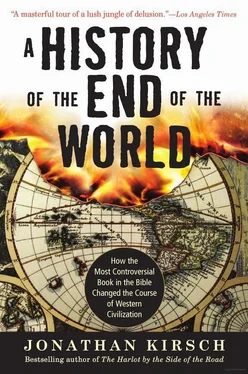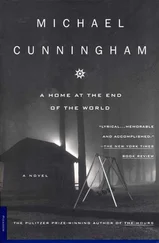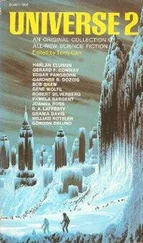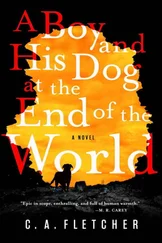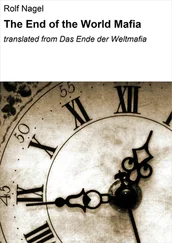64. Paul Boyer, “The Growth of Fundamentalist Apocalyptic in the United States,” in Stein, Apocalypticism, 151, 152.
65. Martin E. Marty, “The Future of No Future,” in Stein, Apocalypticism, 462.
66. Quoted in Paul Boyer, “The Growth of Fundamentalist Apocalyptic in the United States,” in Stein, Apocalypticism, 154.
67. Paul Boyer, “The Growth of Fundamentalist Apocalyptic in the United States,” in Stein, Apocalypticism, 156.
68. Quoted in Weber, Living in the Shadow, 174.
69. Quoted in Boyer, When Time Shall Be, 93.
70. Quoted in Boyer, When Time Shall Be, 94.
71. Scofield, Scofield Reference Bible, 1342 n. 2.
72. Isaac Haldeman, The Signs of the Times (1910), quoted in Boyer, When Time Shall Be, 95.
73. Weber, Living in the Shadow, 62.
74. Quoted in Weber, Living in the Shadow, 62.
75. Quoted in Cohn-Sherbok and Cohn-Sherbok, Jewish and Christian Mysticism, 145.
76. Quoted in Boyer, When Time Shall Be, 299.
77. Quoted in Boyer, When Time Shall Be, 95.
78. Quoted in Boyer, When Time Shall Be, 182.
79. Brian E. Daley, “Apocalypticism in Early Christian Theology,” in Apocalypticism, 13.
80. Quoted in Boyer, When Time Shall Be, 183.
81. Boyer, When Time Shall Be, 89.
82. Domb, Transformation, vii, 133.
83. Rev. 22:20 (KJV).
84. Quoted in Klagsbrun, Voices of Wisdom, 442.
85. Dubnow, History of the Jews, 1:205.
86. Dubnow, History of the Jews, 1:206.
87. Weber, Living in the Shadow, 136.
88. Quoted in Weber, Living in the Shadow, 138–39.
89. Weber, Living in the Shadow, 140.
90. Quoted in Weber, Living in the Shadow, 140.
91. Weber, Living in the Shadow, 141.
92. Weber, Living in the Shadow, 144.
93. Quoted in Weber, Living in the Shadow, 144–45.
94. Quoted in Weber, Living in the Shadow, 145–46.
95. Weber, Living in the Shadow, 188.
96. Quoted in Weber, Living in the Shadow, 190.
97. Arthur W. Pink, The Redeemer’s Return, quoted in Weber, Living in the Shadow, 54.
98. Deut. 32:41–42 (TNK; adapted).
99. James H. Moorhead, “Apocalypticism in Mainstream Protestantism, 1800 to the Present,” in Stein, Apocalypticism, 88, 89, 89, quoting Bibliotheca Sacra (1907) (“…queer bird…”) and Biblical World (1910) (“…highly imaginative Jewish thought…”).
100. Paul Boyer, “The Growth of Fundamentalist Apocalyptic in the United States,” in Stein, Apocalypticism, 154.
101. Quoted in James H. Moorhead, “Apocalypticism in Mainstream Protestantism, 1800 to the Present,” in Stein, Apocalypticism, 95.
102. Quoted in James H. Moorhead, “Apocalypticism in Mainstream Protestantism, 1800 to the Present,” in Stein, Apocalypticism, 99.
103. Paul Boyer, “The Growth of Fundamentalist Apocalyptic in the United States,” in Stein, Apocalypticism, 159.
104. Quoted in Stephen J. Stein, “Apocalypticism Outside the Mainstream in the United States,” in Stein, Apocalypticism, 123.
105. Quoted in Boyer, When Time Shall Be, 100–101.
106. Fussell, Great War, 24.
107. Dan. 11:3–4 (KJV; adapted).
108. Quoted in Weber, Living in the Shadow, 103.
109. Quoted in Weber, Living in the Shadow, 103.
110. Ezek. 39:1 (JPS; adapted).
111. E. L. Langston, Great Britain, Palestine, Russia and the Jews (1918), quoted in Boyer, When Time Shall Be, 186.
112. Langston, Great Britain, Palestine, Russia and the Jews (1918), quoted in Boyer, When Time Shall Be, 186.
113. Rev. 22:17 (KJV).
114. Colwell, Study of the Bible, 100–101 (adapted).
115. Quoted in Boyer, When Time Shall Be, 108–9.
116. Rev. 13:16 (KJV).
117. Weber, Living in the Shadow, 180 (adapted).
118. Rev. 17:5 (KJV).
119. Quoted in Weber, Living in the Shadow, 109.
120. Quoted in Boyer, When Time Shall Be, 110.
121. Quoted in Boyer, When Time Shall Be, 110.
122. Quoted in Boyer, When Time Shall Be, 218.
123. Quoted in Boyer, When Time Shall Be, 111.
124. Quoted in Shirer, Rise and Fall, 240.
125. Thompson, End of Time, 129.
126. Thompson, End of Time, 129–30 (adapted).
127. From a newspaper interview with Norman Cohn quoted in Thompson, End of Time, 130.
128. Rev. 4:6 (RSV).
129. James A. Hijiya, “The Gita of Robert Oppenheimer,” Proceedings of the Americna Philosophical Society, 144:2 (June 2000), 123–67.
CHAPTER 7: THE GODLESS APOCALYPSE
1. On the Beach.
2. On the Beach (adapted).
3. Stephen D. O’Leary, “Apocalypticism in American Popular Culture: From the Dawn of the Nuclear Age to the End of the American Century,” in Stein, Apocalypticism, 396.
4. Susan Sontag, “The Imagination of Disaster,” in Sontag, Against Interpretation, 215.
5. Dick and Zelazny, Deus Irae, 29.
6. Dick and Zelazny, Deus Irae, 29.
7. The Omega Man .
8. Stephen D. O’Leary, “Apocalypticism in American Popular Culture: From the Dawn of the Nuclear Age to the End of the American Century,” in Stein, Apocalypticism, 400.
9. Dr. Strangelove .
10. Quoted in Boyer, When Time Shall Be, 150. (The quote is taken from Blessed Assurance, a 1986 study of attitudes toward nuclear war and religion conducted by A. G. Mojtabai.)
11. Boyer, When Time Shall Be, x, 255.
12. Boyer, When Time Shall Be, x, 255.
13. Weber, Living in the Shadow, 234.
14. Huffey, Hallelujah Side, 65.
15. Rev. 1:7 (KJV).
16. Quoted in Boyer, When Time Shall Be, 106–7.
17. Donald Grey Barnhouse, Eternity, December 1945, quoted in Boyer, When Time Shall Be, 118.
18. Boyer, When Time Shall Be, 137.
19. Quoted in Paul Boyer, “The Growth of Fundamentalist Apocalyptic in the United States,” in Stein, Apocalypticism, 164–65 (adapted).
20. M. R. DeHaan, quoted in Boyer, When Time Shall Be, 320 (“Every single inhabitant…”); Reiner Smolinski, “Apocalypticism in Colonial North America,” in Stein, Apocalypticism, 62 (“…the ratio between the eternally lost and saved…”); S. Dwight Coder, quoted in Boyer, When Time Shall Be, 242 (“…the Lord is going to judge…”).
21. Quoted in Boyer, When Time Shall Be, 244.
22. Wilburt Smith, quoted in Boyer, When Time Shall Be, 235.
23. M. R. DeHaan, quoted in Boyer, When Time Shall Be, 233.
24. David Wilkerson, Set the Trumpet to Thy Mouth, quoted in Boyer, When Time Shall Be, 234.
25. Dave Hunt, The New Age Movement in Prophecy, quoted in Boyer, When Time Shall Be, 233–34 (“a cosmic conspiracy to install the Antichrist”).
26. Rev. 2:24 (RSV).
27. Rev. 16:2, 13:17 (RSV).
28. Paul Boyer, quoted in Barkun, Culture of Conspiracy, 44.
29. Paul Boyer, “The Growth of Fundamentalist Apocalyptic in the United States,” in Stein, Apocalypticism, 176.
30. Boyer, “The Growth of Fundamentalist Apocalyptic in the United States,” in Stein, Apocalypticism, 175.
Читать дальше
